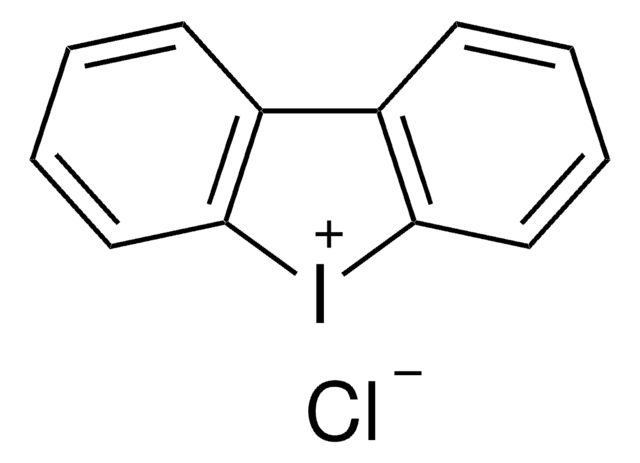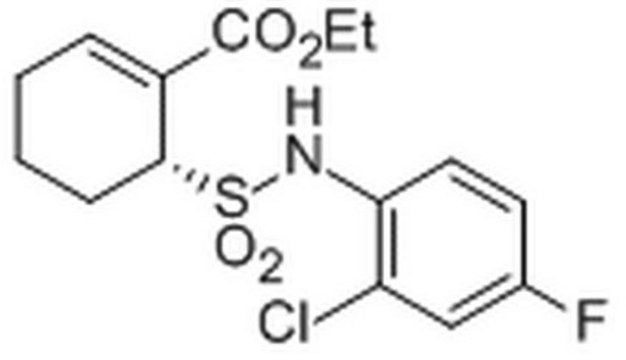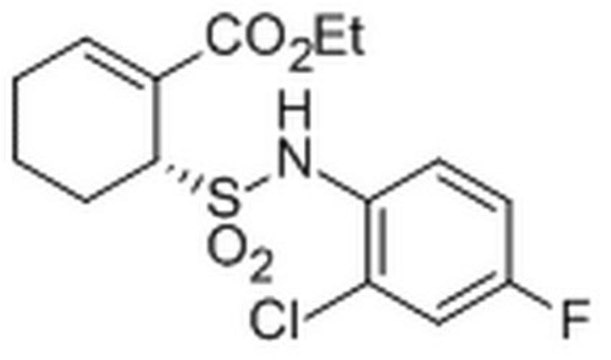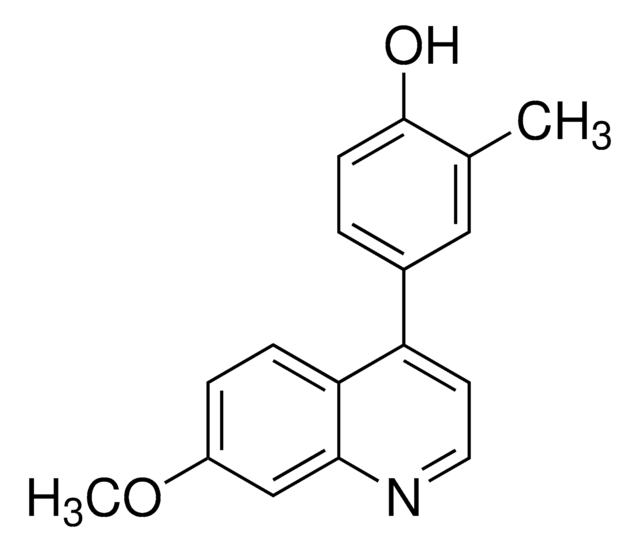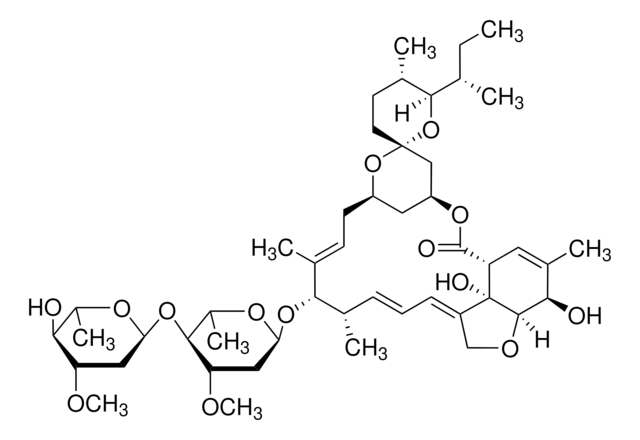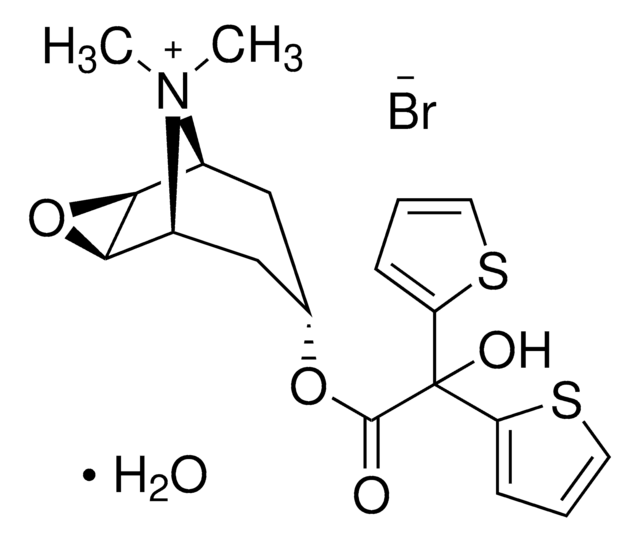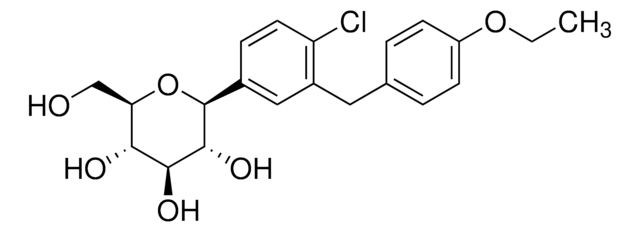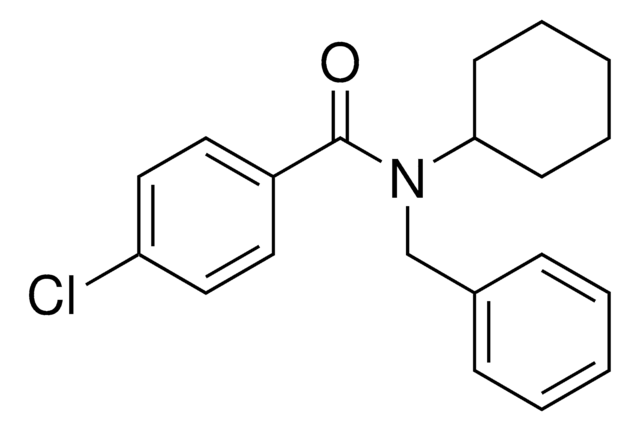General description
The racemic mixture of an aqueous soluble (at least 50 µg/mL or 140 µM at pH 6.5) pyridinyl-4H-benzopyran compound that inhibits insulin-regulated (IRAP) aminopeptidase activity by competing against substrate for IRAP extracellular catalytic site binding (Ki = 0.48 µM; using 25 µM Leu-AMC as substrate) with concomitant interaction with active site zinc via its acetamide, while displaying little potency against glucose-6-phosphatase, aminopeptidase N, ACE1, leukotriene A4 hydrolase, or ER-associated aminopeptidases 1 & 2 (≤13% inhibition at 100 µM). Reported to boost 1 mM dibutyryl cAMP-evoked glucose uptake in cultured rat hippocampal slices (68% higher uptake in 5 min than dbcAMP alone without 100 nM HFI-419) in vitro and exhibit in vivo memory-enhancing efficacay in an object recognition test when administered directly into the cerebral lateral ventricle of rats via a cannula implant (0.1 or 1.0 nmol/2 µL/rat). HFI-419 is reported to hydrolyze into slightly less potent HFI-142 (Ki = 2.0 µM) after i.v. (plasma t1/2 = 11 min; 2 mg/kg) or i.p (plasma t1/2 = 4.6 h; 10 mg/kg) injection in rats, although HFI-142 is more stable and likely exhibits better blood-brain permeability (Blood:Brain HFI-142 ratio = 3.36 and 0.38, respectively, 0.5 and 4 h post single 3 mg HFI-419/kg i.v. injection).
The racemic mixture of an aqueous soluble pyridinyl-4H-benzopyran compound that inhibits insulin-regulated aminopeptidase (IRAP) activity by competing against substrate for IRAP extracellular catalytic site binding (Ki = 0.48 µM against 25 µM Leu-AMC), while displaying little potency against glucose-6-phosphatase, aminopeptidae N, ACE1, leukotriene A4 hydrolase, or ER-associated aminopeptidases 1 & 2. Reported to boost 1 mM dibutyryl cAMP-evoked glucose uptake in cultured rat hippocampal slices (68% higher uptake with 100 nM HFI-419 than dbcAMP alone) in vitro and exhibit in vivo memory-enhancing efficacay in an object recognition test via direct cerebral lateral ventricle administration (0.1 or 1.0 nmol/2 µL/rat). HFI-419 is reported to hydrolyze into the less potent HFI-142 (Ki = 2.0 µM) after i.v. or i.p. injection in rats, although HFI-142 is more stable and likely exhibits better blood-brain permeability.
Biochem/physiol Actions
Cell permeable: yes
Primary Target
IRAP
Reversible: yes
Packaging
Packaged under inert gas
Warning
Toxicity: Standard Handling (A)
Reconstitution
Following reconstitution, aliquot and freeze (-20°C). Stock solutions are stable for up to 3 months at -20°C.
Use only fresh DMSO for reconstitution.
Other Notes
Mountford, S.J., et al. 2014. J. Med. Chem.57, 1368.
Albiston, A.L., et al. 2011. Br. J. Pharmacol.164, 37.
Albiston, A.L., et al. 2010. Mol. Pharmacol.78, 600.
Albiston, A.L., et al. 2008. FASEB J.22, 4209.
Legal Information
CALBIOCHEM is a registered trademark of Merck KGaA, Darmstadt, Germany

